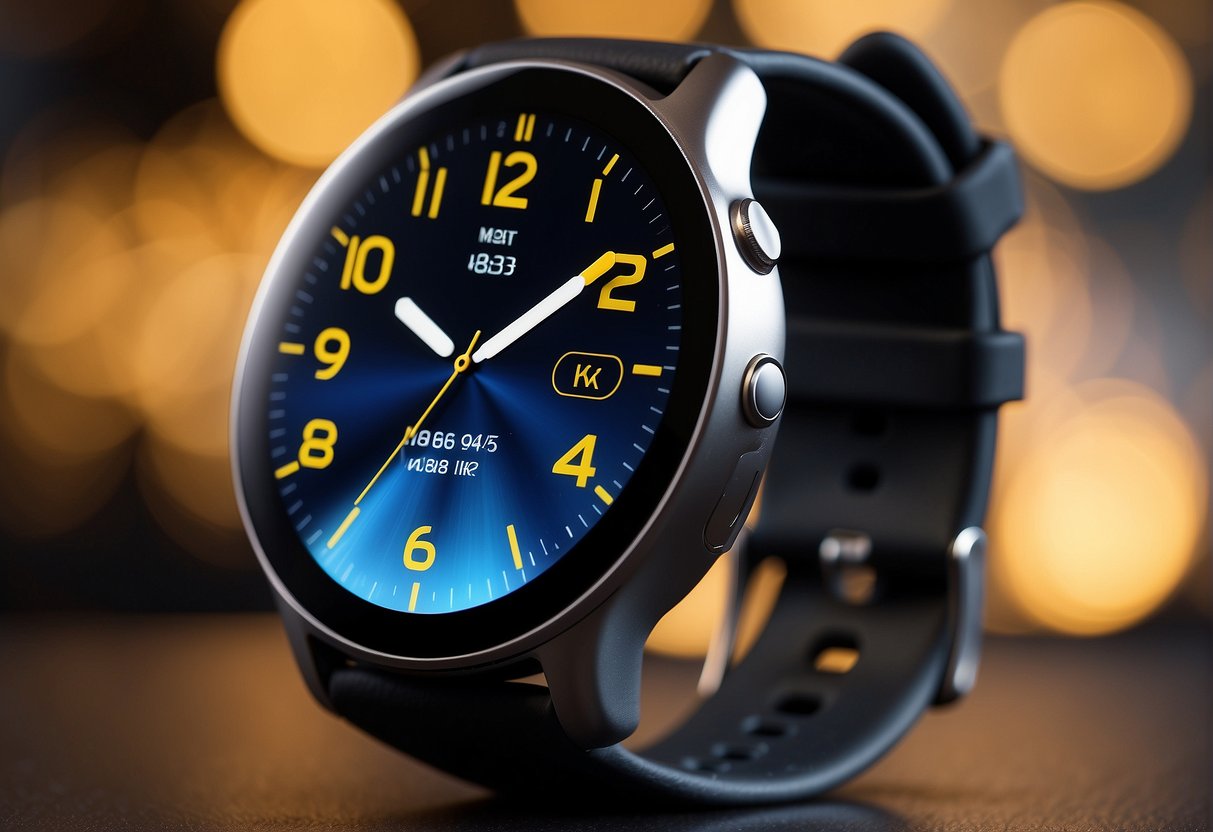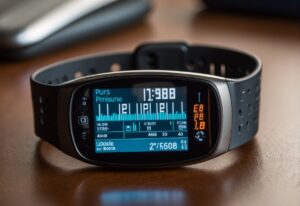In 2024, the quest for a smartwatch that combines advanced functionality with prolonged battery life has led to significant advancements.
Consumers now have access to devices that not only deliver a suite of high-tech features, but also promise to keep pace with their lifestyles, minimizing the need for frequent recharging.
Manufacturers have recognized the importance of battery life as a critical factor in user satisfaction and have accordingly focused their efforts on enhancing the longevity of their wearable devices.
Among the notable contenders for the smartwatch with the longest battery life, there are options that stand out for their impressive endurance.
These smartwatches not only provide the standard fitness tracking, notifications, and application support, but also offer extended battery performance that caters to the demands of users seeking a reliable companion for their active routines.
The various models boast a range of battery lives, from those lasting several days with a single charge to those pioneering new power-saving technologies that significantly extend the time between charges.
The advancements in this field reflect an ongoing commitment from manufacturers to improve smartwatch technology in response to user needs.
Essential features such as GPS, music storage, and safety tracking now come with optimized battery usage, ensuring that functionality is not sacrificed for the sake of battery longevity.
This balance of power efficiency and practical tools shapes the current landscape, offering consumers smartwatches that are not only more capable but also more enduring than ever before.
Key Factors Influencing Battery Life
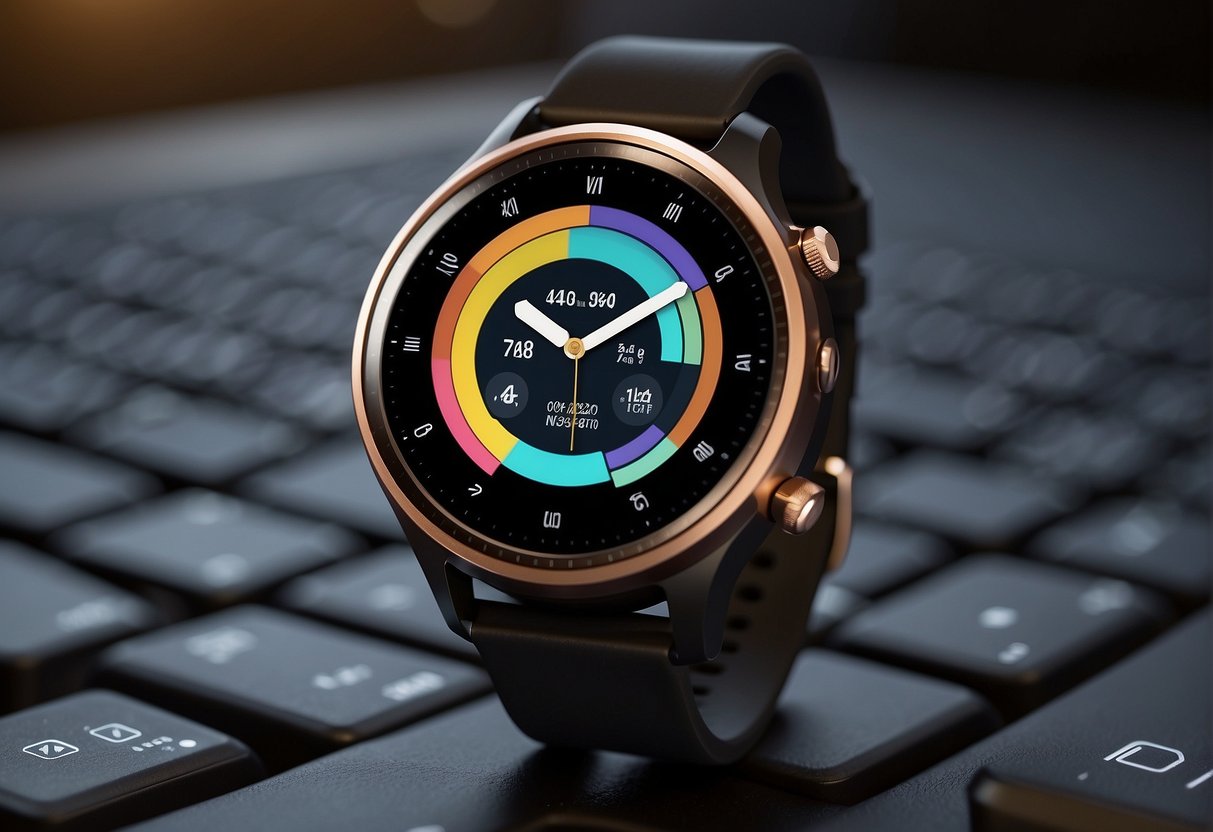
When selecting a smartwatch, consumers should consider how display technology, processor efficiency, and battery management affect longevity of use between charges.
Display Technology and Efficiency
OLED and AMOLED displays are key in smartwatches like the Fitbit Versa 4, as they tend to use less power compared to traditional LCD screens.
These screens only light up the necessary pixels for displaying time or notifications, which can significantly conserve battery life. However, features like an always-on display can draw more energy and reduce overall battery duration.
Processor and Operating System Optimization
The processor is the heart of a smartwatch, and its efficiency dictates battery consumption.
Smartwatches with advanced processors that are optimized for Wear OS or watchOS often offer better battery management through software optimization.
For instance, the ability of the processor to handle tasks like GPS tracking and heart rate monitoring without excessive energy drain is crucial for extending the watch’s usage between charges.
Battery Capacity and Energy Management
Battery life is directly influenced by the mAh capacity of the smartwatch’s battery and how effectively the device manages energy.
Larger batteries can store more energy, but smart energy management systems are equally important.
Some smartwatches come with power-saving modes that disable certain sensors when not needed, or they employ solar charging capabilities to extend battery life further.
Efficient power management can be the defining factor for smartwatches that offer unprecedented long-term usability.
Top Smartwatches with Remarkable Battery Life

In 2024, smartwatches have advanced, offering not just innovative features and sleek designs, but also significantly improved battery life.
Consumers looking for long-lasting wearables have ample choices, each with its unique set of capabilities catered to diverse needs and preferences.
Apple Watch Ultra 2
The Apple Watch Ultra 2 continues Apple’s legacy with a robust design and a focus on fitness features.
Its enhanced battery life represents a major leap from its predecessors, targeting users who crave long adventures without the concern of frequent charging.
Apple’s dedication to compatibility ensures that the Apple Watch Ultra 2 seamlessly integrates with other Apple devices, making it a top choice for iPhone users.
Samsung Galaxy Watch 6
Samsung’s Galaxy Watch 6 delivers on both style and stamina.
With a return to the beloved rotating bezel design, this smartwatch combines functionality with an elegant look. Its extended battery life means users can enjoy the watch’s multitude of features without interruption.
Tailored for those who value both Samsung’s design aesthetics and reliable battery performance, the Galaxy Watch 6 stands out in the market.
Garmin Watch Models
Garmin’s watch models are frequently lauded in reviews for their extraordinary battery life.
With various models catering to different activities, from professional sports to outdoor exploration, Garmin watches offer a blend of durability and long battery life.
They are particularly known for their solar-charging capabilities, which can significantly extend the battery life, making them the premier choice for athletes and explorers.
Fitbit Versa 4
The Fitbit Versa 4 is a standout for its six-day battery life and comprehensive fitness features.
It supports built-in GPS and sleep tracking, along with a choice between Amazon Alexa or Google Assistant.
The Fitbit Versa 4’s versatility and emphasis on fitness tracking, coupled with Fitbit Pay for contactless payments, offer users a fusion of convenience and longevity at a competitive price.
Integrated Features and Their Impact on Battery Performance
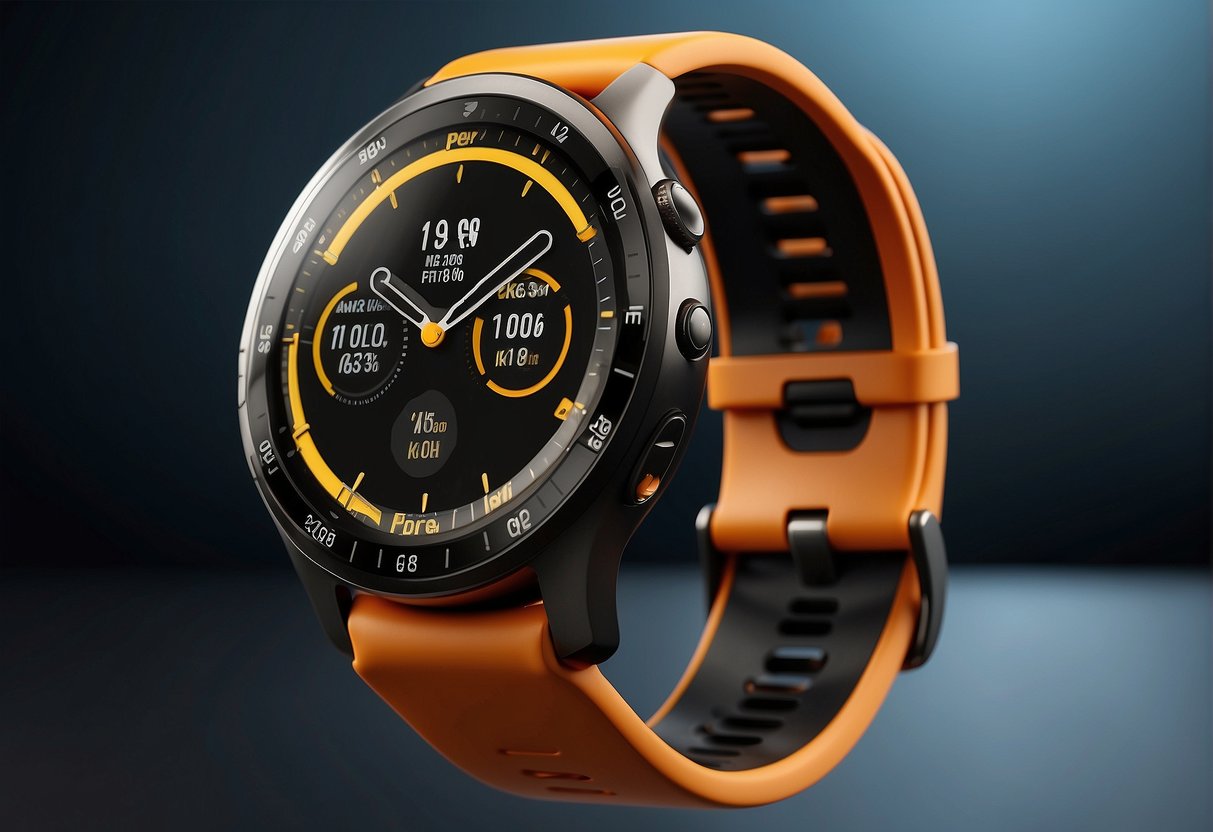
In the landscape of smartwatches, battery performance is significantly influenced by the range of integrated features. From health and fitness tracking to smartphone connectivity, each functionality plays a role in battery consumption.
Health and Fitness Tracking Capabilities
The calibre of health and fitness features, such as heart rate monitoring, ECG functions, and blood oxygen monitors, can affect a smartwatch’s battery life.
Continuous heart rate tracking demands consistent sensor use, which can lead to quicker battery drain.
For instance, the Garmin Instinct 2 Solar utilizes solar charging technology, allowing health enthusiasts to use fitness tracking features for extended periods without the need for frequent recharging.
Smartphone Integration and Connectivity Options
Smartwatch battery longevity is also impacted by the level of smartphone integration.
Features like receiving notifications, answering calls, and sending texts require a stable connection via Bluetooth or LTE, which consumes more power.
Additionally, the compatibility with different operating systems, whether Android or iOS, can determine the efficiency of the connectivity, as certain smartwatches are optimized for a specific platform.
For example, Android users may find that watches with Google Assistant tend to have better integration and potentially more efficient battery usage.
Additional Features and Customizability
Music streaming, contactless payments via services like Google Pay, and GPS navigation are convenience features that also draw on the smartwatch’s battery.
Customizable apps and utility features can vary widely in their power needs.
Watches like the Fitbit Versa 4 boast a suite of such features but need careful battery management to ensure longevity.
Users often have the option to tweak settings for notifications, GPS usage, and other apps to balance functionality with battery life.
Considerations for Purchase and Maintenance
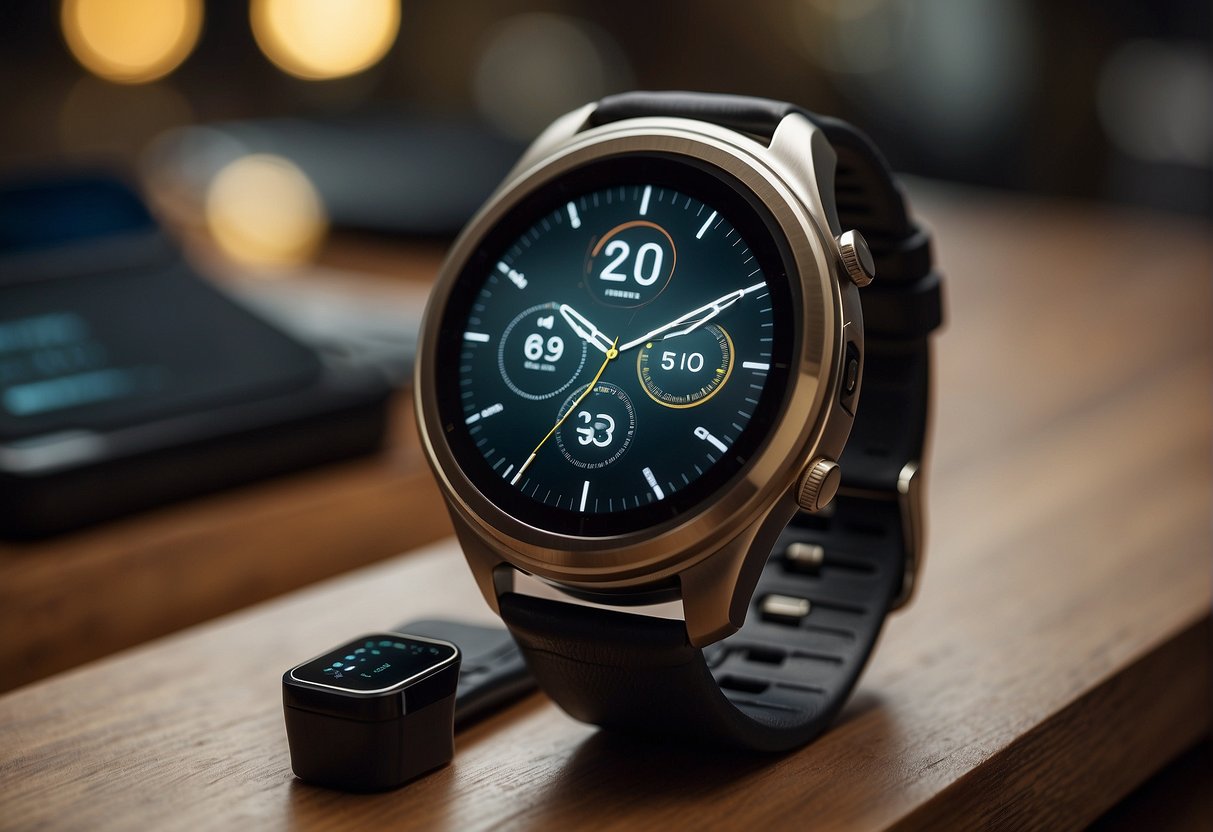
When selecting a smartwatch with the best battery life in 2024, buyers should focus on matching the device to their lifestyle needs, maintaining battery health, and balancing price with performance.
Matching the Smartwatch to Lifestyle Needs
A smartwatch should complement the user’s day-to-day activities.
Those with active lifestyles might prioritize devices like the Fitbit Versa 4, known for its robust fitness tracking capabilities and long battery life.
Alternatively, style-conscious consumers may prefer the Galaxy Watch 6 Classic for its sophisticated design, featuring a stainless steel or titanium case that doesn’t sacrifice durability.
- Key Lifestyle Considerations:
- Fitness tracking: For exercise enthusiasts.
- Material: Stainless steel or titanium for durability.
- Weight and size: For comfort during extended use.
- Style and color: To match personal preferences.
Maintaining Battery Health Over Time
To ensure longevity, consumers must understand how to maintain their smartwatches’ battery health.
Regular updates and adhering to manufacturer guidelines can significantly extend battery life.
For instance, the Apple Watch Series 9 benefits from optimized battery management software that needs consistent updating to function effectively.
- Battery Maintenance Tips:
- Keep the software updated.
- Follow the manufacturer’s charging recommendations.
- Avoid exposure to extreme temperatures.
Evaluating Price Versus Performance Trade-offs
The decision to invest in a smartwatch often comes down to price versus performance.
Budget-conscious buyers may opt for the Apple Watch SE, which offers a balance between cost and functionality.
In contrast, those willing to invest more might consider the Google Pixel Watch 2, which boasts the latest features aligned with top-tier performance metrics.
- Price-Performance Considerations:
- Budget: Determines the range of smartwatches to consider.
- Features vs. cost: High-end features may increase price but also enhance user experience.
- Durability vs. style: Prioritizing one may impact the other, influencing long-term satisfaction.

